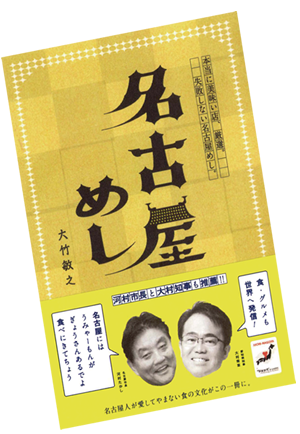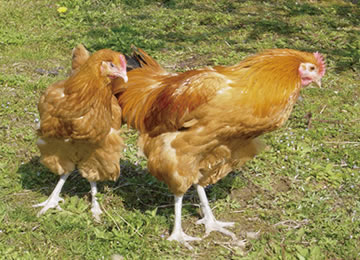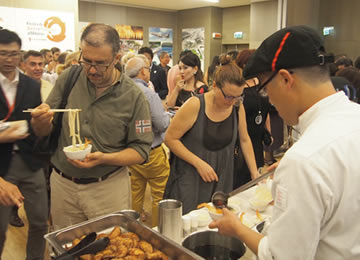Let's decide on Nagoya's deliciousness. I LOVE Nagoya Meshi
Nagoya Meshi is a food culture that the region is proud of
Nagoya Meshi is a local food unique to Aichi and Nagoya. The many true local gourmet foods that the common people are accustomed to on a daily basis are a valuable regional food culture that can only be found here!

The person who teaches me: Toshiyuki Otake
A freelance writer living in Nagoya who loves Nagoya Meshi. Her books include ``Nagoya Cafe.'' She serves as an advisor to the Nagoya Meshi Popularization Promotion Council.

From food to guides to really delicious restaurants. A compilation of Mr. Otake's Nagoya Meshi coverage that you can learn and use.
"Nagoya Meshi" (Liberal Publishing, 1400 yen + tax)
Nagoya Meshi attracts a lot of attention from tourists from outside the prefecture.
More than Nagoya Castle or Atsuta Shrine, I want to eat Nagoya Meshi when I visit Nagoya! According to a survey of tourist and hotel guest trends conducted by Nagoya City (26), the recognition level of Nagoya Meshi was at the top of the list at 56.5%. The satisfaction rating was by far 44.6%, surpassing major tourist destinations such as Atsuta Jingu (41.7%), Higashiyama Zoo and Botanical Garden (40.7%), historic sites and heritage sites (35.9%), and Sakae (68.6%). It also ranked first in terms of actually experiencing it (tasting it) and intending to visit/experience it (made it a goal). Nagoya Meshi is undoubtedly Nagoya's number one tourist resource.
When did we start calling it “Nagomeshi”?
The origin of the word ``Nagomeshi'' is actually clear. His birth father is Kenichi Inamoto, president of Zetton, a restaurant company in Nagoya. When the company opened its first Tokyo store in 13, its signature menu included local Nagoya dishes such as miso kushikatsu and stone-grilled Hitsumabushi. The Tokyo media that came to cover the story wondered if they could express this in one word. There was an idea to call it ``Nagomeshi,'' a play on Itameshi, but Mr. Inamoto said, ``Let's call it ``Nagomeshi,'' which is easier to understand, and the name was born.
"It's a gourmet food that's not just from Nagoya City, but from a wide area."
``Nagoyameshi'' is by no means a word used only for Nagoya cuisine. It refers to local cuisine from a wide range of areas, including Aichi and the Tokai region. The distribution area of Nagoya Mushi can also be referred to as the ``bean miso cultural area.'' Production and consumption of soybean miso, which is made only from soybeans and salt, is limited to the Tokai region. The characteristic of soybean miso is that it is aged for a long period of time and has a rich flavor. The people of the Tokai region who ate this on a daily basis naturally became umami-oriented, and it can be said that Nagomeshi was created to suit their tastes.

“What is Nagoya Shishi?”
A major feature of Nagoya Meshi is its wide variety. Noodles and rice side dishes, sweets and cafe menus, sake accompaniments and feast ingredients, Japanese food, Chinese food, Western food, from traditional local food to the widely popular creative dishes of specific restaurants... Okinawa is probably the only place in Japan that has so many regionally unique dishes. Although it is located in the middle of Honshu, it is one of the most unique places in the country. One of the appeals of Nagoya Meshi is that you can easily experience a different culture of food.

“The sweets, the service, and the unique Nagoya style.”
Nagoya meshi is not only on the menu. It also includes sweets such as Uiro, Oni Manju, and Ebi senbei. Additionally, the word "Morning" in a coffee shop does not strictly refer to the type of food, but rather to the service provided mainly in the morning hours, but the unique eating habits of this region are recognized as Nagoya Meshi. Although they are not originally limited to Nagoya, they include Curry Udon Noodles, which have evolved in a unique way that can be considered Nagoya-style, and Ebi-furai, which is especially popular.
Nagoya Meshi, Japan's representative food culture spreading its wings around the world
As Japanese food attracts more attention, Nagoya Meshi is trying to promote itself overseas with its unique charm. How did people around the world experience it?
Nagomeshi was popular at Expo Milano
Expo Milano was held in 2015 with the theme of “food”. The ``Aichi-Nagoya Fair in Milan'' was held from August 4th to 8th in the Japan pavilion, which was the most popular. Aichi Prefecture and Nagoya City jointly exhibited and served shrimp tempura Kishimen Noodles, Tebasaki Chicken Wings, Ten-musu, and red soup stock. The feedback from those who tried it was generally positive, with comments such as ``Tebasaki Chicken Wings tastes like Italian food and is familiar to me,'' and ``This is the first time I've eaten non-al dente noodles in a cold soup.It's delicious.'' Surprisingly (?), the appeal of Nagomeshi was well received by people around the world.


